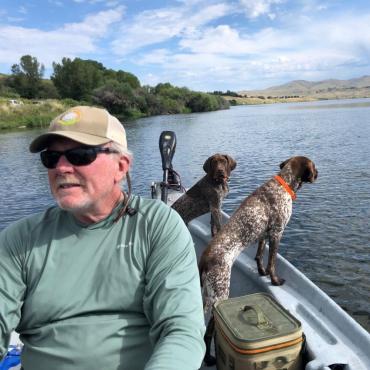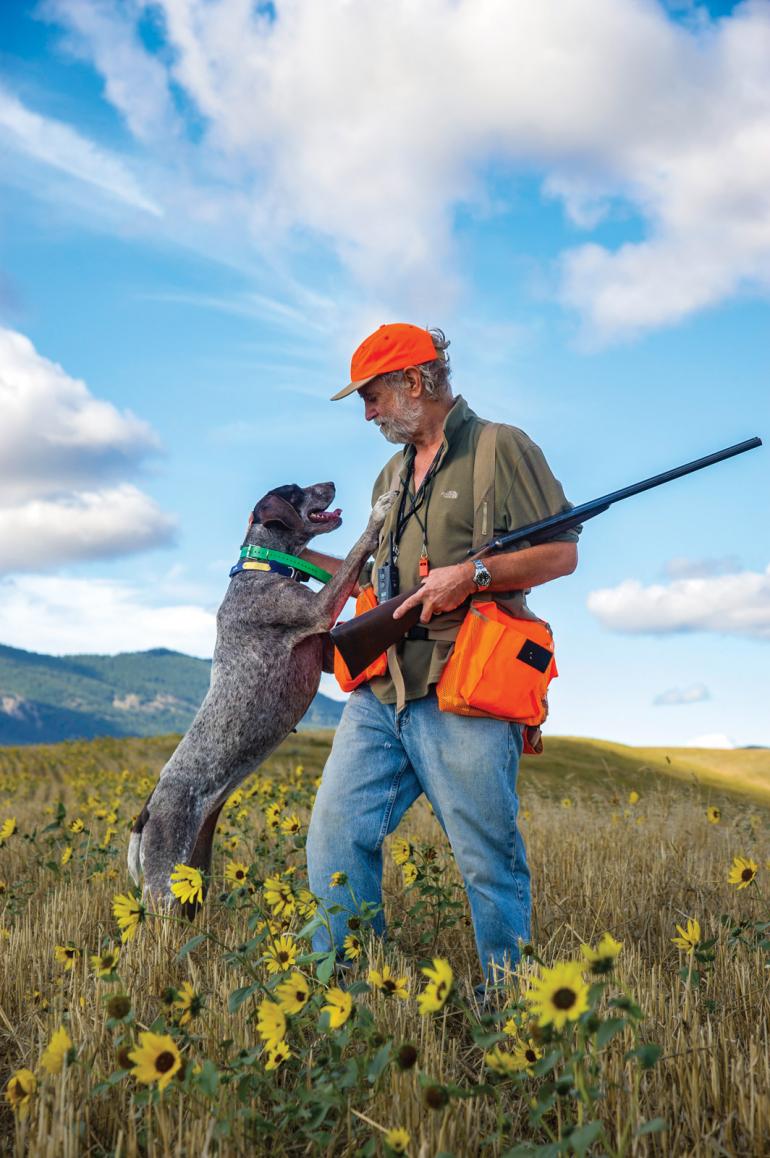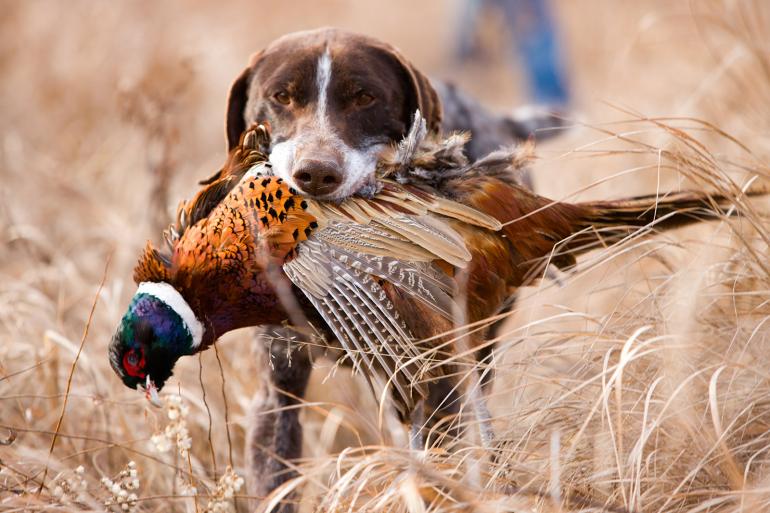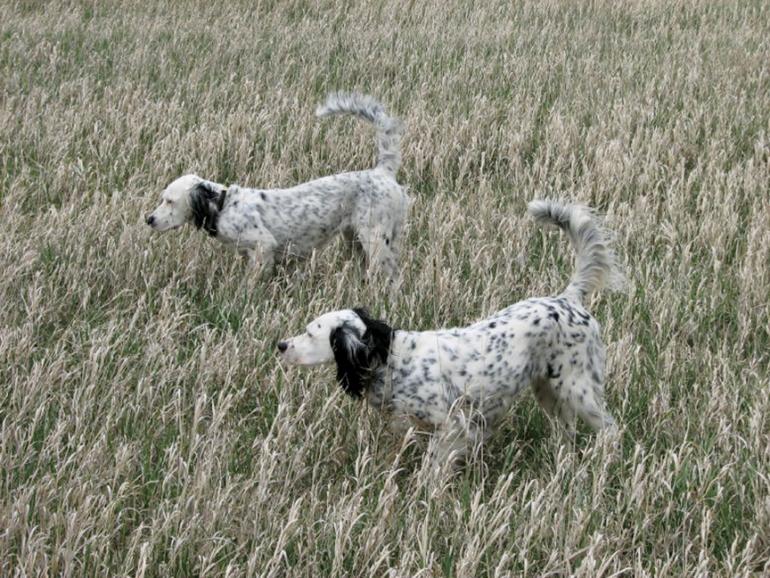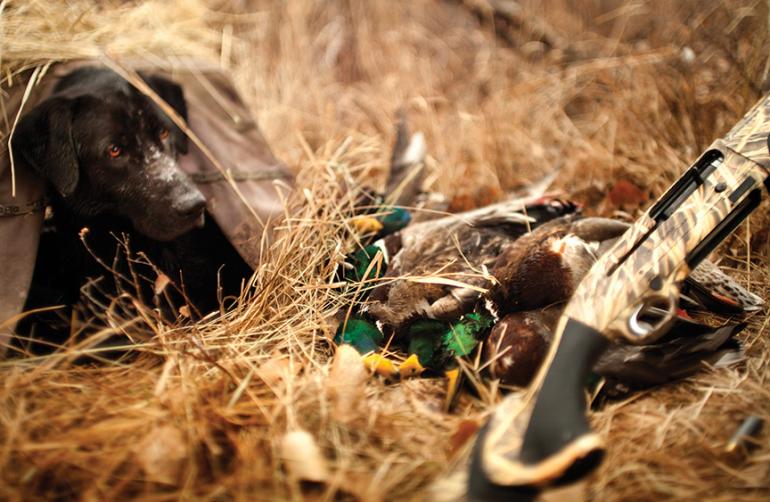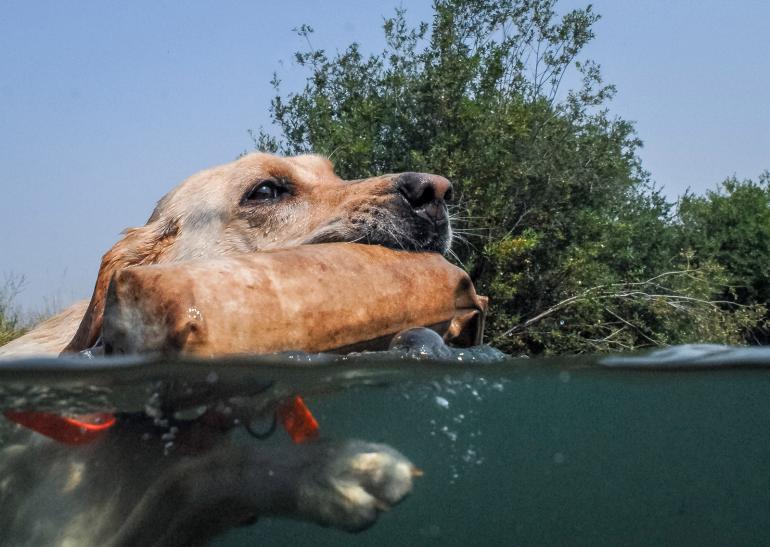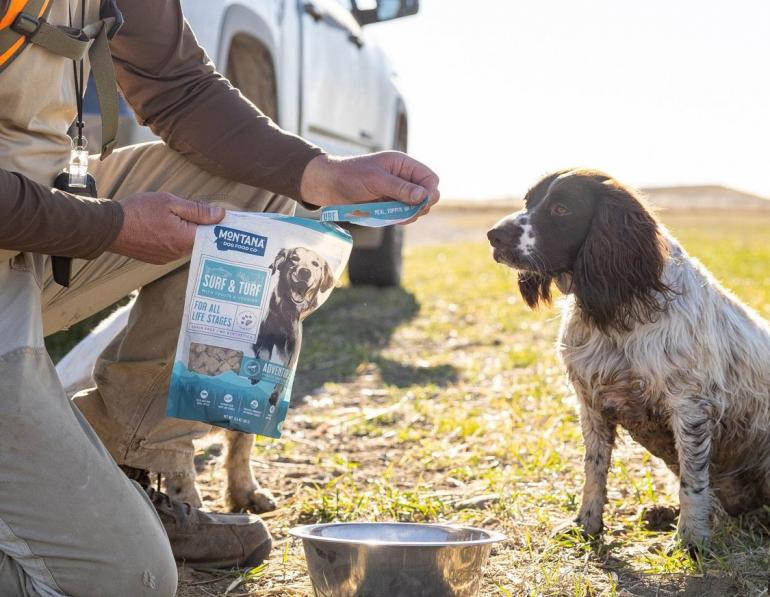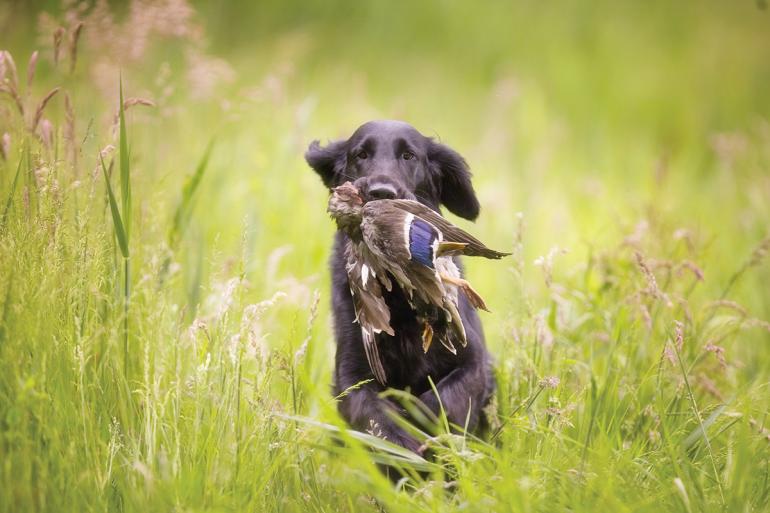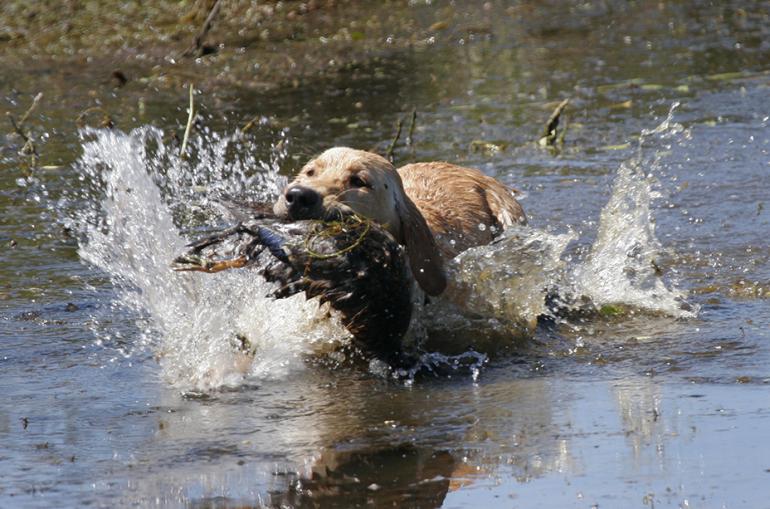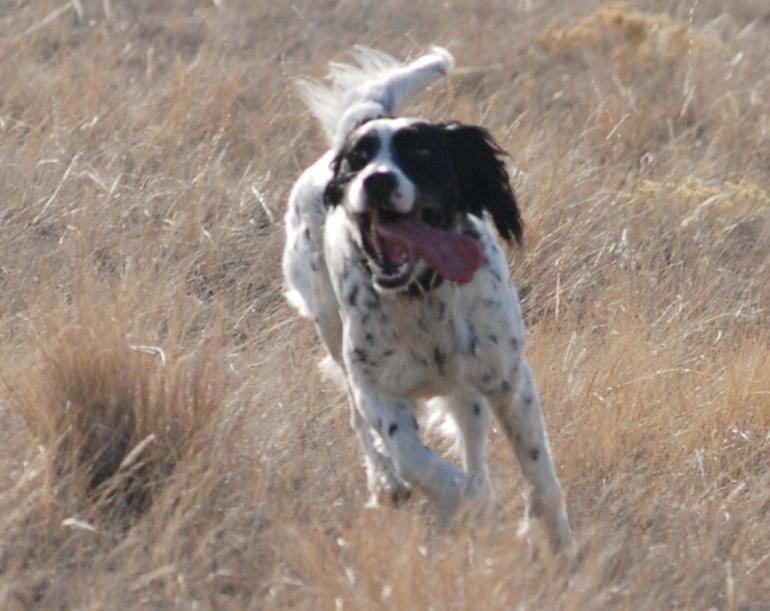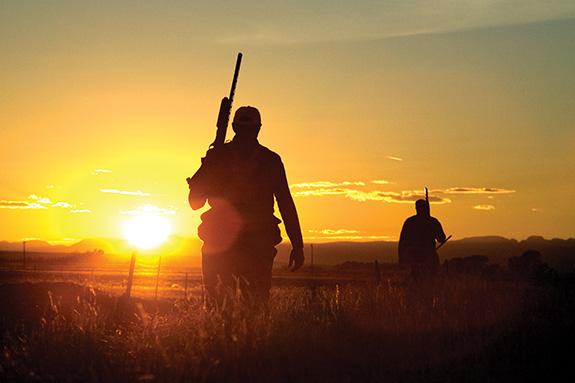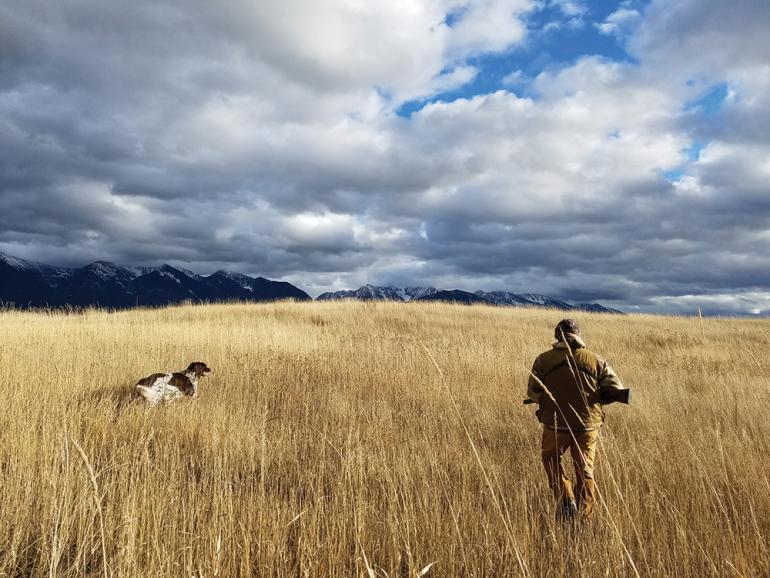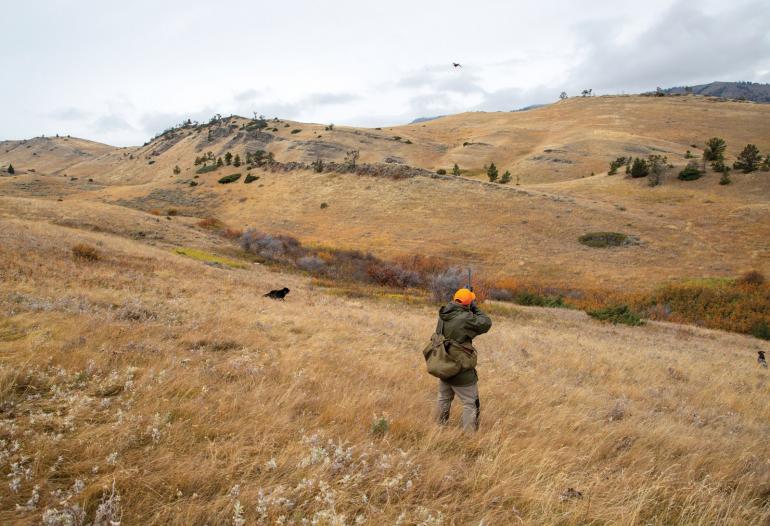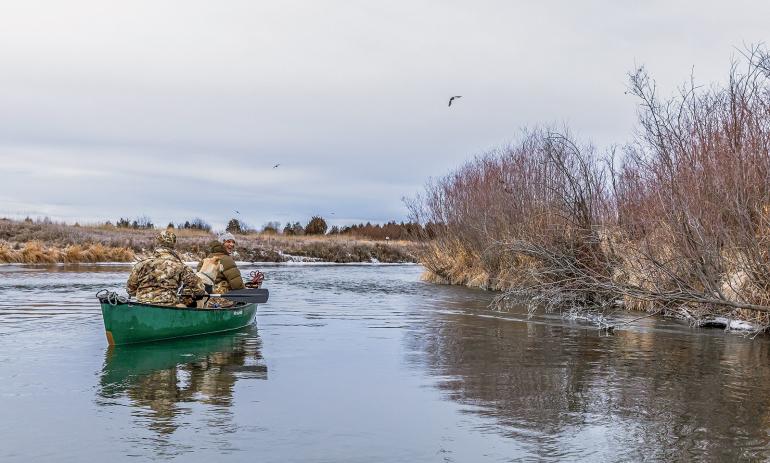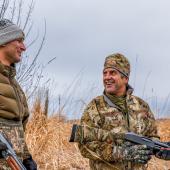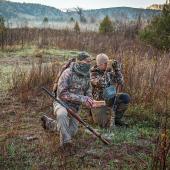Break the Backslide
Tuning up your bird dog for hunting season.
As you prepare yourself and your pup for the season ahead, you’ll likely reminisce on last year, remembering both the good and the not-so-good. All the time you spent training may seem to have been in vain, and everything that went right in the beginning may have been forgotten at the end. Sometimes it’s environmental conditions, other times it’s the dog or the type of birds you hunt. Tight-holding sharptails might not be as much of a temptation as those late-season roosters heading for the Dakotas.
Several years ago, I attended a workshop with a well-known trainer. My "master" hunting dog was breaking on the shot before I released him and running through the rest of the covey birds. Perplexed, I asked why this normally-solid pup was backsliding. The trainer looked at me and asked, “You or the dog?” After thinking for a minute, I realized that by not immediately correcting the behavior, I had reinforced it. By focusing solely on hunting birds rather than disciplining my dog, I had allowed my canine to develop bad habits.
When this happens, you can either hope that shoulder-season amnesia has wiped those bad habits from your dog’s mind, or you can act and begin correcting these behaviors before they get worse. I recommend the latter.
Deciding What You Want
A retriever or spaniel owner may need to work with his dogs to keep them within gun range, as dogs that are too far away when the birds flush are a recipe for a frustrating—and fruitless—hunting experience. Similarly, a waterfowler will want his dog beside him until he shoots, as dogs breaking at the excitement of decoying birds typically spoil a hunt, leading to empty game bags and frustrated owners. For successful times afield, these habits must be broken.
Pointer owners know that a well-trained dog will actively search for game, hold point when she finds birds, and retrieve well once the birds are down. If they don’t, then what’s the point? Thankfully, there are training methods for each step to help you get your dog ready to hunt.
If not addressed quickly, your once-steady dog's newly developed bad habits could continue through the end of the season and beyond.
When hunting with pointing dogs, you must decide early how you’d like them to perform in different field situations. Do you want your pup to hold point until you arrive and shoot, until the bird flushes, until the bird is in the air and the shot is fired, or until you give it the command to retrieve? Each step requires progressively more training than the last. Once a decision's been made, you’ll be well on your way to owning a dog that will work for you in the field. However, the proof is in the pudding, and it’s important to remember that training with pen-raised birds often differs from wild birds in the field.
When hunting on foot or with a group, it’s harder to give the dog your full attention. Your focus is on the dog on point, working to the dog, getting in position to make a shot, and then concentrating on shooting the bird. Meanwhile, your dog could be distracted by other hunters and dogs that don’t honor her point. In these situations, even well-trained dogs may break on the flush, the shot, or on another dog’s break, taking a cue from the dog rushing toward the bird. If this occurs once, you can almost always guarantee it will happen again. If not addressed quickly, your once-steady pointer's newly developed bad habits could continue through the end of the season and beyond.
Back to Basics
Reinforce the basic commands you’ve taught your dog along the way. For pointing breeds, this means returning when called, staying by your side, and stopping when commanded. For a good upland experience with retrievers or flushing dogs, heeling and getting them to stay in range is key. If you have a group of friends who helped train your dog, reach out to see if they’d be willing to help again. If you don’t have ready access to knowledgeable companions, there are plenty of resources here in the Gallatin Valley that can help.
The Missouri Headwaters Gun Dog Club includes retriever, spaniel, and pointing-dog handlers. They meet near Missouri Headwaters State Park, where they have dedicated land and access to live birds to help keep your dog sharp during the spring and summer. I’ve found that there are experienced handlers who are ready and willing to help you with any issues you may encounter.
Another resource is the North American Versatile Hunting Dog Club, for dogs that can point, retrieve, and track, on both land and water. They have several chapters in the area, including the Big Sky Chapter and the Montana Sharptail Chapter. Both have regular training days and testing programs to track your dog’s progress. There's also a plethora of professional trainers here in the valley. Speak with other hunters who have utilized these services to find what’s right for you and your dog.
Before you worry about whether you made a mistake in training, stop and think about the conditions that may have led to the undesirable behavior.
Alternatively, find someone who will do all the shooting while you watch your dog. Or find a non-hunting friend who will tag along for the hike. I’ve been lucky enough to walk with a non-hunting spouse over the last several years, and she's been great at implementing corrections when the dogs start deviating from their training. Companions who don’t want to carry a gun are priceless. Rewarding them with a game-bird dinner and all the fixings is a small price to pay for their help.
When a behavior that I don’t want crops up during a hunt, I try to stop and assess how I can fix it in the field. Sometimes it is a simple solution like reinforcing a command, while other times you might have to go back to the training field for a refresher.
Remember that not every outing goes according to plan. Before you worry about whether you made a mistake in training, stop and think about the environmental conditions that may have led to the undesirable behavior. Is it too dry for good scenting? Swirling wind? Running birds? All of these things can influence how dogs react in the field. If I’m not sure, I tend to err on the side of the dog. If the behavior continues in other situations, then it's time for some corrective training.
The old saying “Hope is not an option,” is particularly appropriate as another hunting season approaches. As with all sporting pastimes, practice makes perfect. This year, spend time with your dogs and refamiliarize them with the training that made them great in the field. I spend most of my free time in summer working with my dogs to train out any bad habits and reinforce the good ones. The dogs are often excited to be training and doing what they love.
Keep the Tank Full
Finally, during hunting season, it’s critical that your dog is fueled appropriately to perform at its peak in the field. The cooler temperatures, rugged terrain, and long days of activity demand a diet rich in high-quality ingredients, including lean proteins, healthy fats, and nutrient-dense calories that support sustained energy and muscle recovery. Montana Dog Food Co.’s Adventure Fuel freeze-dried meal toppers are a convenient and powerful way to boost your dog’s existing kibble. Made with real, minimally processed ingredients, it delivers the kind of clean nutrition hunting dogs need—without fillers or artificial junk—helping to keep them sharp, strong, and ready for every flush and retrieve.
Enjoy the season! It is all too short, and there’s no better place to be afield in fall than Montana.

